#tollbooth kirk
Text
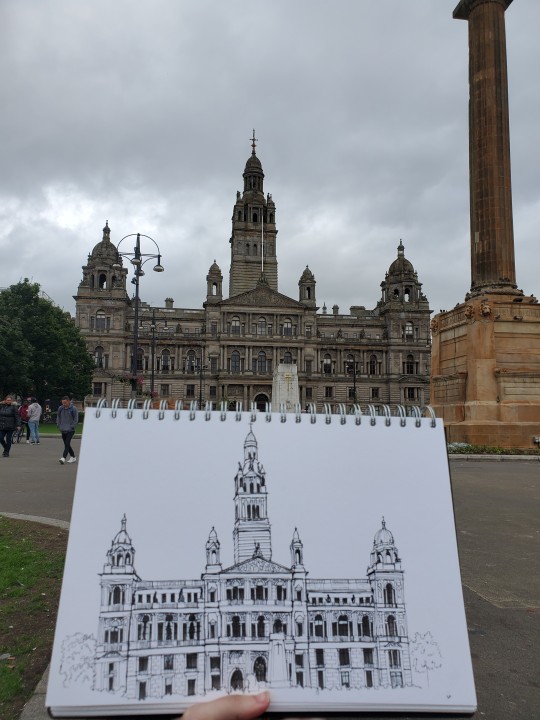

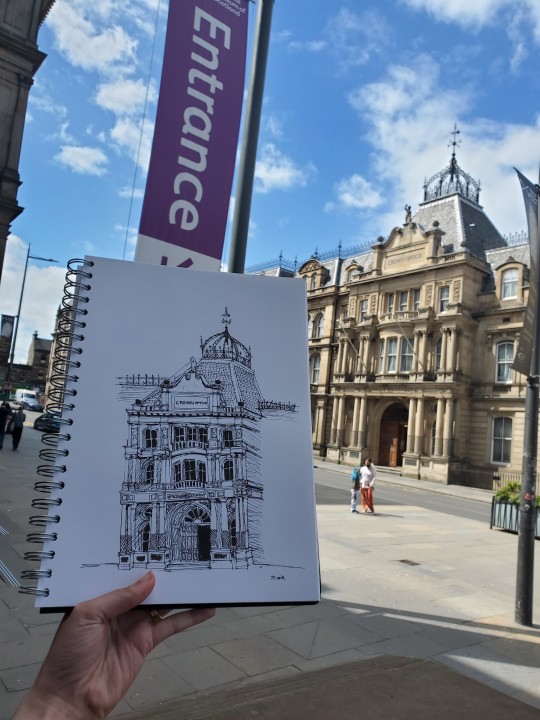

I'm always saying that I can draw, just not people. I woke up missing Scotland so here's some of my favorite sketches I did from my tome there.
#my art#architectural drawing#scotland my beloved#if anyones curious these are of#glasgow city hall#tollbooth kirk#the crown office across the street from the national museum of scotland#the scott monument
12 notes
·
View notes
Text



The young King James VI made his first official visit to Edinburgh on September 30th 1579.
James VI had spent his childhood at Stirling Castle. Now he came to Edinburgh to begin his adult rule. aged 13.
Born in 1566, he was the product of Mary’s ill-fated marriage to Henry, Lord Darnley. Darnley’s assassination in early 1567, and Mary’s subsequent over-hasty marriage to one of its perpetrators, Lord Bothwell, triggered events that led to Mary’s downfall.
James VI became king of Scotland in 1567 when Mary was forced to abdicate.
According to the writings of David Moysie, James VI left Stirling on 29 September 1579 despite a storm. He had lunch at Dunipace and dinner at Linlithgow Palace where he stayed the night, and came to Holyroodhouse the next evening. The town lined the road with men in armour and a salute was fired from Edinburgh Castle. The streets were cleared of beggars, executed criminals were removed down (from their pikes on the tolbooth) and the streets thoroughly cleaned.
His entry to the town was marked by a ceremonial Royal entry. James arrived from Dalkeith Palace. The processional route went from the West Port, to the Overbow, to the Tolbooth, to St Giles Kirk, the Mercat Cross, the Salt Tron, the Nether Bow, Canongate Cross, and Holyrood Palace
The gates of the town, the tollbooths of Edinburgh and the Canongate, and other buildings were painted white with limewash, called "calk". Householders along the route were asked to hang the external stairs with tapestry and "Arras works".
At the West Port the king was met by 32 burgesses of Edinburgh, whose names are recorded, who carried a canopy made of purple velvet. John Shairp gave a speech in Latin. There was a tableau vivant of the Judgement of Solomon. At the Overbow Cupid gave James the keys to the town. Cupid was played by a boy who descended in a globe. At the Tolbooth four maidens (probably played by boys) represented Peace, Justice, Plenty and Policy, a scene relating to the four Cardinal Virtues. At St Giles Dame Religion invited the king to hear a sermon on the duty of kings and Psalm 21 was sung. . Afterwards, at the Mercat Cross Bacchus shared out wine. At the Salt Tron the genealogy of the Scottish monarchy was presented, perhaps using portraits. The king's horoscope was presented an actor playing Ptolemy at the Netherbow Port. At the Canongate Cross a scene represented the abolition of the Pope's authority in Scotland.
At Holyrood Palace a new lodging was prepared for the king's favourite Esmé Stewart next to the royal apartment. A course or tournament ground made of sand for "running at the ring" was laid at Holyroodhouse. Celebrations continued at Dalkeith Palace, hosted by the former Regent Morton.
Similar pageantry was used in September 1561 when Mary, Queen of Scots had made an Entry, and in May 1590 at the Entry and Coronation of Anne of Denmark.
A short account of the events occurs in the chronicle, The historie and life of King James the Sext, written in Scots;
At the Wast Port of Edinburgh, he was ressavit be the Magistrats of the toun under a pompous payle of purple velvet. That port presentit unto him the wisdome of Solomon, as it is written in the thrid chapter of the first buik of the Kings : That is to say King Solomon was representit with the tua wemen that contendit for the young chylde. This done, they presented unto the King, the sworde for the one hand, and the scepter for the uther.
And as he maid forder progres within the toun, in the streat that ascendis to the castell, thair is an ancient port, at the whilk hang a curious globe, that opnit artificiallie as the King came by, wharin was a young boy that discendit craftelie, presenting the keyis of the toun to his Majestie, that war all maid of fyne massie sylver; and thais war presentlie ressavit be ane of his honorable counsall at his awin command. During this space, Dame Music and hir scollars exercesit hir art with great melodic. Then in his discence, as he came foment the hous of Justice, thair shew thayme selfis unto him, foure gallant vertewous ladeyis; to wit, Peax, Justice, Plentie, and Policie; and ather of thayme had an oraison to his Majestic.
Tharefter, as he came towart the chief collegiall kirk, thare Dame Religion shew hirself, desyring his presence, whilk he then obeyit be entring the kirk; whare the cheif preacher for that tyme maid a notable exhortation unto him, for the embracing of Religion and all hir cardinall vertewis, and of all uther morall vertewis. Tharefter, he came furth and maid progres to the Mercat Croce, whare he beheld Bacchus with his magnifik liberalitie and plentie, distributing of his liquor to all passingers and behalders, in sik apperance as was pleasant to see. A litill beneth is a mercat place of salt, wharupon was payntit the genealogie of the Kings of Scotland, and a nomber of trumpets sounding melodioslie, and crying with loud voyce, "Wealfayre to the King".
At the east port was erectit the conjunctioun of the planets, as thay war in thair degreis and places the tyme of his Majesteis happie nativitie, and the same vivelie representit be the assistance of King Ptolome : And withall, the haill streits war spred with flowres; and the forehowsis of the streits, be the whilks the King passit, war all hung with magnifik tapestrie, with payntit historeis, and with the effegeis of noble men and wemen : And thus he past owt of the toun of Edinburgh to his palice of Halyruidhous
Note the last words on the description, “ his palice of Halyruidhous “ A couple of years ago someone question my use of the wording “Holyroodhouse” saying she had never heard the Palace being called that before, well this confirms that over 300 years ago that this was being used, rather than Holyrood Palace, as is often used.
The king was given a cupboard of silver gilt plate made by the Edinburgh goldsmiths Edward Hart, Thomas Annand, George Heriot, Adam Craig and William Cokky. It was valued at 1000 English marks. This included a basin and a laver, two flasks, six cups and covers, four candle holders, a salt, a silver salver, and dozen silver plates. William Fairlie was asked to oversee the gilding of the silver on 8th October and assist Henry Nesbit make an account of the expenses. The wealthy merchant and "Customar" of Edinburgh Robert Gourlay, a supporter of Regent Morton, complained to the Privy Council of Scotland when he was asked to contribute £30.
An account for repairs and building work at Holyrood in August and September 1579 survives. The works were supervised by William MacDowall, the royal Master of Work. Mention is made of slating the roof of a "Dancing House", carpenters who made a great chest for the king's pantry, glazing the chamber for "Lord Lennox", and a pavement in the chapel. New rooms were made for William Murray, and for Jerome Bowie, Master of the Wine Cellar. George Wallace or Vallance and his workman plastered the old hall, the chapel and the gallery, and painted the council house with chalk distemper paint. Women worked cleaning chambers in the tower, the old hall, the forework, and the gallery, and the inner close or courtyard. Their wages were two shillings a day.
The visit by James was a huge success. Everyone was delighted to see their king and with the excitement of once again having a royal court in Edinburgh.
7 notes
·
View notes
Photo

Tollbooth Kirk, Edinburgh
117 notes
·
View notes
Text
April Hero Theme Master List
Since today is the last day of April this was the end of the Hero Theme and tomorrow May will start a new theme. Here is a list of all the characters used this month.
1-Digory Kirke from The Chronicles of Narnia
2-Frodo Baggins from The Lord of the Rings
3-Jacob Portman from Miss Peregrine’s Home for Peculiar Children series
4-Rhett Butler from Gone with the Wind
5-Michaele Corleone from The Godfather
6-Eustace Clarence Scrubb from The Chronicles of Narnia
7-John Coffey from The Green Mile
8-Jaime Fraiser from the Outlander series
9-Klaus Baudelaire from A Series of Unfortunate Events
10-Taran from The Chronicles of Prydain
11-Eddard Stark from A Song of Ice and Fire
12-Winston from 1984
13-Raul de Chagny from The Phantom of the Opera
14-Cormoran Strike from The Cormoran Strike series
15-Augustus Waters from The Fault in Our Stars
16-Danny Torrence from The Shining and Doctor Sleep
17-Milo from The Phantom Tollbooth
18-Albert Trask from Titanic Crossing
19-Ponyboy Curtis from The Outsiders
20-Bastian Balthazar Bux from The Neverending Story
21-Peeta Mellark from The Hunger Games trilogy
22-Ralph from Lord of the Flies
23-Atticus Finch from To Kill a Mockingbird and Go Set a Watchman
24-Wang Lung from The Good Earth
25-Bilbo Baggins from The Hobbit
26-Matthias from Redwall and Mattimeo
27-Harry Dresden from The Dresden Files
28-Harry Potter from the Harry Potter series
29-Boxer from Animal Farm
30-Mikael Blomvist from The Girl With the Dragon Tattoo series
1 note
·
View note
Text




On January 20th 1604 Alastair MacGregor of Glenstrae, Chief of the outlawed Clan Gregor was executed at the Old Tolbooth, Edinburgh.
Alastair joined 11 of his clansmen that day, to mark his rank, he, as Chief, was hung higher than his kinsmen.
He was held in the Old Tollbooth which is now marked by the Heart of Midlothian. It is a heart-shaped mosaic, formed in coloured granite setts, built into the pavement near the West Door of St Giles High Kirk in the High Street section of the Royal Mile in Edinburgh.
It is situated close to Parliament House, which formerly housed the Parliament of Scotland and is now the home of the Court of Session.
This execution was the result of an ultimate betrayal by the Chief of the Campbells.
In 1589 John Drummond, the Kings forester, was murdered after hanging some MacGregor’s for poaching. The Chief, Alasdair MacGregor of Glenstrae, gave shelter to the killer. Such was the highland honour to do so, he took responsibility for the act and was condemned by the Privy Council.
King James VI, issued an edict proclaiming the name MacGregor “altogidder abolished,” meaning that those who bore the name must renounce it or suffer death.
This wasn’t helped by probably the most significant event in MacGregor history which was the Battle of Glen Fruin on Feb 7 1603. The Proscriptive Acts of Clan Gregor were enacted on the 3rd of April 1603. This draconian ruling authorized the capture of Alasdair MacGregor of Glenstrae and his leading kinsmen.
For almost a year Alistair MacGregor of Glen Strae evaded capture but when he was finally captured, he sought protection from the Chief of the Campbells to go to London to beg clemence from James the VI, who had recently claimed the English throne. The Campbells gave him safe passage to the borders, but arranged in advance for soldiers to capture him on the English side, and returned him to Edinburgh to stand trial with eleven of his chieftains.
The jury included many of Alastair’s bitterest enemies.
Today, visitors to Edinburgh will often notice people spitting on the Heart. Although it is now said to be done for good luck, it was originally done as a sign of disdain for the former prison of which the entrance lay directly at the Heart's location. It is then probable, that the spitting custom may have been begun by the accused.
21 notes
·
View notes
Photo
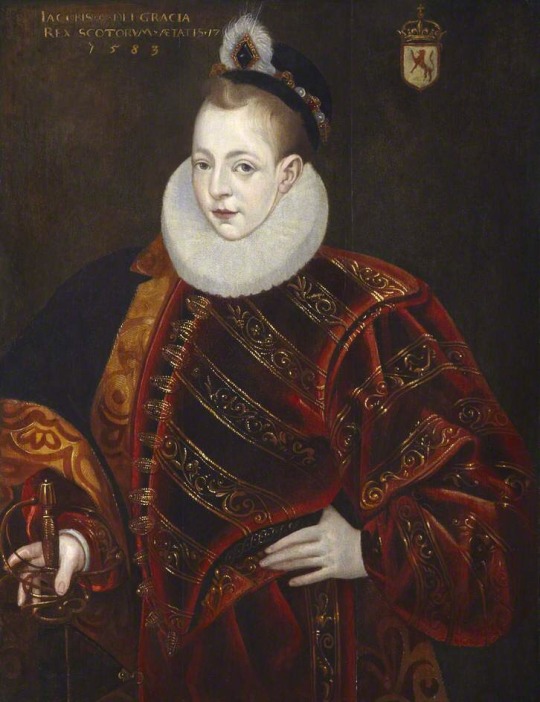
The young King James VI made his first official visit to Edinburgh on September 30th 1579.
James VI had spent his childhood at Stirling Castle. Now he came to Edinburgh to begin his adult rule. aged 13.
Born in 1566, he was the product of Mary’s ill-fated marriage to Henry, Lord Darnley. Darnley’s assassination in early 1567, and Mary’s subsequent over-hasty marriage to one of its perpetrators, Lord Bothwell, triggered events that led to Mary’s downfall.
James VI became king of Scotland in 1567 when Mary was forced to abdicate.
According to the writings of David Moysie, James VI left Stirling on 29 September 1579 despite a storm. He had lunch at Dunipace and dinner at Linlithgow Palace where he stayed the night, and came to Holyroodhouse the next evening. The town lined the road with men in armour and a salute was fired from Edinburgh Castle. The streets were cleared of beggars, executed criminals were removed down (from their pikes on the tolbooth) and the streets thoroughly cleaned.
His entry to the town was marked by a ceremonial Royal entry. James arrived from Dalkeith Palace. The processional route went from the West Port, to the Overbow, to the Tolbooth, to St Giles Kirk, the Mercat Cross, the Salt Tron, the Nether Bow, Canongate Cross, and Holyrood Palace
The gates of the town, the tollbooths of Edinburgh and the Canongate, and other buildings were painted white with limewash, called "calk". Householders along the route were asked to hang the external stairs with tapestry and "Arras works".
At the West Port the king was met by 32 burgesses of Edinburgh, whose names are recorded, who carried a canopy made of purple velvet. John Shairp gave a speech in Latin. There was a tableau vivant of the Judgement of Solomon. At the Overbow Cupid gave James the keys to the town. Cupid was played by a boy who descended in a globe. At the Tolbooth four maidens (probably played by boys) represented Peace, Justice, Plenty and Policy, a scene relating to the four Cardinal Virtues. At St Giles Dame Religion invited the king to hear a sermon on the duty of kings and Psalm 21 was sung. . Afterwards, at the Mercat Cross Bacchus shared out wine. At the Salt Tron the genealogy of the Scottish monarchy was presented, perhaps using portraits. The king's horoscope was presented an actor playing Ptolemy at the Netherbow Port. At the Canongate Cross a scene represented the abolition of the Pope's authority in Scotland.
At Holyrood Palace a new lodging was prepared for the king's favourite Esmé Stewart next to the royal apartment. A course or tournament ground made of sand for "running at the ring" was laid at Holyroodhouse. Celebrations continued at Dalkeith Palace, hosted by the former Regent Morton.
Similar pageantry was used in September 1561 when Mary, Queen of Scots had made an Entry, and in May 1590 at the Entry and Coronation of Anne of Denmark.
A short account of the events occurs in the chronicle, The historie and life of King James the Sext, written in Scots;
At the Wast Port of Edinburgh, he was ressavit be the Magistrats of the toun under a pompous payle of purple velvet. That port presentit unto him the wisdome of Solomon, as it is written in the thrid chapter of the first buik of the Kings : That is to say King Solomon was representit with the tua wemen that contendit for the young chylde. This done, they presented unto the King, the sworde for the one hand, and the scepter for the uther.
And as he maid forder progres within the toun, in the streat that ascendis to the castell, thair is an ancient port, at the whilk hang a curious globe, that opnit artificiallie as the King came by, wharin was a young boy that discendit craftelie, presenting the keyis of the toun to his Majestie, that war all maid of fyne massie sylver; and thais war presentlie ressavit be ane of his honorable counsall at his awin command. During this space, Dame Music and hir scollars exercesit hir art with great melodic. Then in his discence, as he came foment the hous of Justice, thair shew thayme selfis unto him, foure gallant vertewous ladeyis; to wit, Peax, Justice, Plentie, and Policie; and ather of thayme had an oraison to his Majestic.
Tharefter, as he came towart the chief collegiall kirk, thare Dame Religion shew hirself, desyring his presence, whilk he then obeyit be entring the kirk; whare the cheif preacher for that tyme maid a notable exhortation unto him, for the embracing of Religion and all hir cardinall vertewis, and of all uther morall vertewis. Tharefter, he came furth and maid progres to the Mercat Croce, whare he beheld Bacchus with his magnifik liberalitie and plentie, distributing of his liquor to all passingers and behalders, in sik apperance as was pleasant to see. A litill beneth is a mercat place of salt, wharupon was payntit the genealogie of the Kings of Scotland, and a nomber of trumpets sounding melodioslie, and crying with loud voyce, "Wealfayre to the King".
At the east port was erectit the conjunctioun of the planets, as thay war in thair degreis and places the tyme of his Majesteis happie nativitie, and the same vivelie representit be the assistance of King Ptolome : And withall, the haill streits war spred with flowres; and the forehowsis of the streits, be the whilks the King passit, war all hung with magnifik tapestrie, with payntit historeis, and with the effegeis of noble men and wemen : And thus he past owt of the toun of Edinburgh to his palice of Halyruidhous
Note the last words on the description, “ his palice of Halyruidhous “ A couple of years ago someone question my use of the wording “Holyroodhouse” saying she had never heard the Palace being called that before, well this confirms that over 300 years ago that this was being used, rather than Holyrood Palace, as is often used.
The king was given a cupboard of silver gilt plate made by the Edinburgh goldsmiths Edward Hart, Thomas Annand, George Heriot, Adam Craig and William Cokky. It was valued at 1000 English marks. This included a basin and a laver, two flasks, six cups and covers, four candle holders, a salt, a silver salver, and dozen silver plates. William Fairlie was asked to oversee the gilding of the silver on 8th October and assist Henry Nesbit make an account of the expenses. The wealthy merchant and "Customar" of Edinburgh Robert Gourlay, a supporter of Regent Morton, complained to the Privy Council of Scotland when he was asked to contribute £30.
An account for repairs and building work at Holyrood in August and September 1579 survives. The works were supervised by William MacDowall, the royal Master of Work. Mention is made of slating the roof of a "Dancing House", carpenters who made a great chest for the king's pantry, glazing the chamber for "Lord Lennox", and a pavement in the chapel. New rooms were made for William Murray, and for Jerome Bowie, Master of the Wine Cellar. George Wallace or Vallance and his workman plastered the old hall, the chapel and the gallery, and painted the council house with chalk distemper paint. Women worked cleaning chambers in the tower, the old hall, the forework, and the gallery, and the inner close or courtyard. Their wages were two shillings a day.
The visit by James was a huge success. Everyone was delighted to see their king and with the excitement of once again having a royal court in Edinburgh.
16 notes
·
View notes
Photo

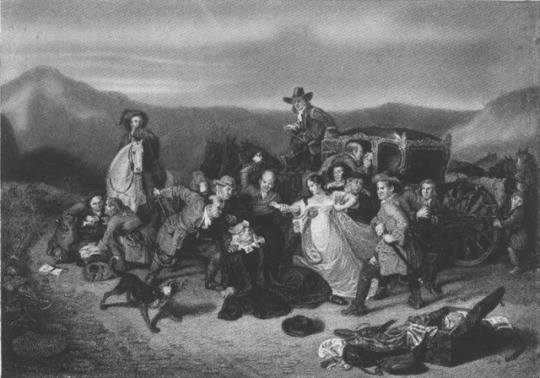
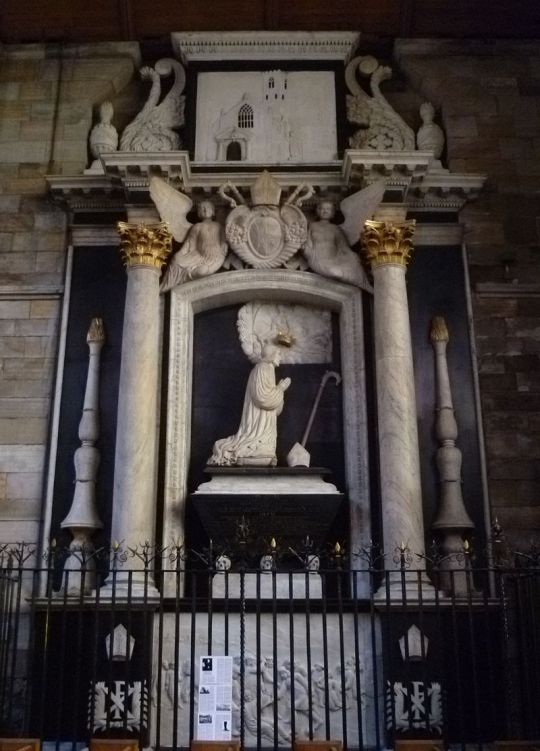
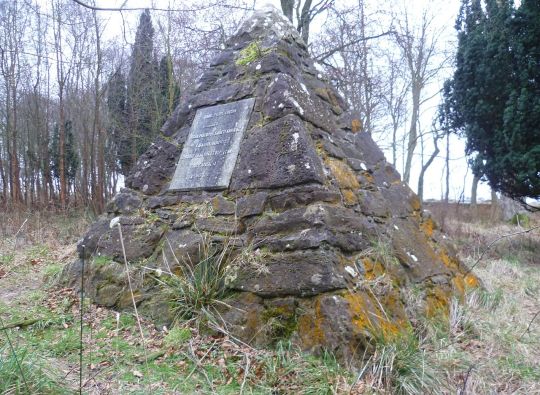
On May 3rd 1679, Archbishop James Sharp, Primate of Scotland, was attacked and killed.
Sharp was educated at King’s College, Aberdeen and became minister at Crail, a royal burgh in Fife, in 1649. During the Civil Wars he came to be seen as the leader of the more moderate and loyal wing of the Kirk. As a result he was briefly detained by Cromwell in the Tower of London. Following the restoration of Charles II in 1660, Sharp was appointed King’s Chaplain and in 1661 consecrated Archbishop of St Andrews. Considered a traitor, he was detested by the Presbyterians. He survived one assassination attempt in 1668 but was ambushed on Magus Moor near St Andrews on 3 May 1679, dragged from his carriage and murdered.
By all accounts Archbishop Sharp was a nasty piece of work; he was an enthusiastic proponent of the Catholic faith, having found favour with the king, he had a meteoric rise "through the ranks" to become the Bishop of St. Andrews.
Sharp was instrumental in overturning the "quarter" given to the Covenanting rebels that surrendered after the Battle of Bothwell Bridge, causing many of them to die the typical horrible death of a judicial execution.
The assassins were out that fateful day in search of The Sheriff of Fife, an appointee of Sharp, who was equally vigorous in the persecution of Covenanters. Fortunately (for him) he was tipped off that a party of men were asking about him and he did not venture out that day. Unfortunately the group happened upon the Bishop and his daughter who were travelling to St. Andrews from Edinburgh and seizing the opportunity took their revenge by dragging him out of his coach then stabbing and shooting him.
Only one of the nine assassins was ever caught, tried and executed specifically for the Murder of Bishop Sharp. Following the murder, Andrew Guillan escaped Fife and worked as a farm labourer near Cockpen. He was caught working on the Sabbath and questioned, he was unlucky enough to be recognised as one of the murderers. He was then taken to the Tollbooth in Edinburgh, where he self incriminated himself with the murder.
Following his trial on July 18th 1683, he was found guilty and sentenced to death. Before he was hung, he had his hands cut off, he was then partially strangled, taken down from the scaffold where his head was cut off and then disembowelled. His head was taken to Cupar for public display and his body was hung in chains at Magnus Muir.
Images are of the unfortunate Sharp, a depiction of the murder and two memorials, one at Holy Trinity Church, St. Andrews, the other on Magus Muir where the assassination took place.
There's a much more dramatic account on the link here https://www.heraldscotland.com/news/12328025.brutal-murder-on-the-high-road-and-the-people-revolt/
8 notes
·
View notes